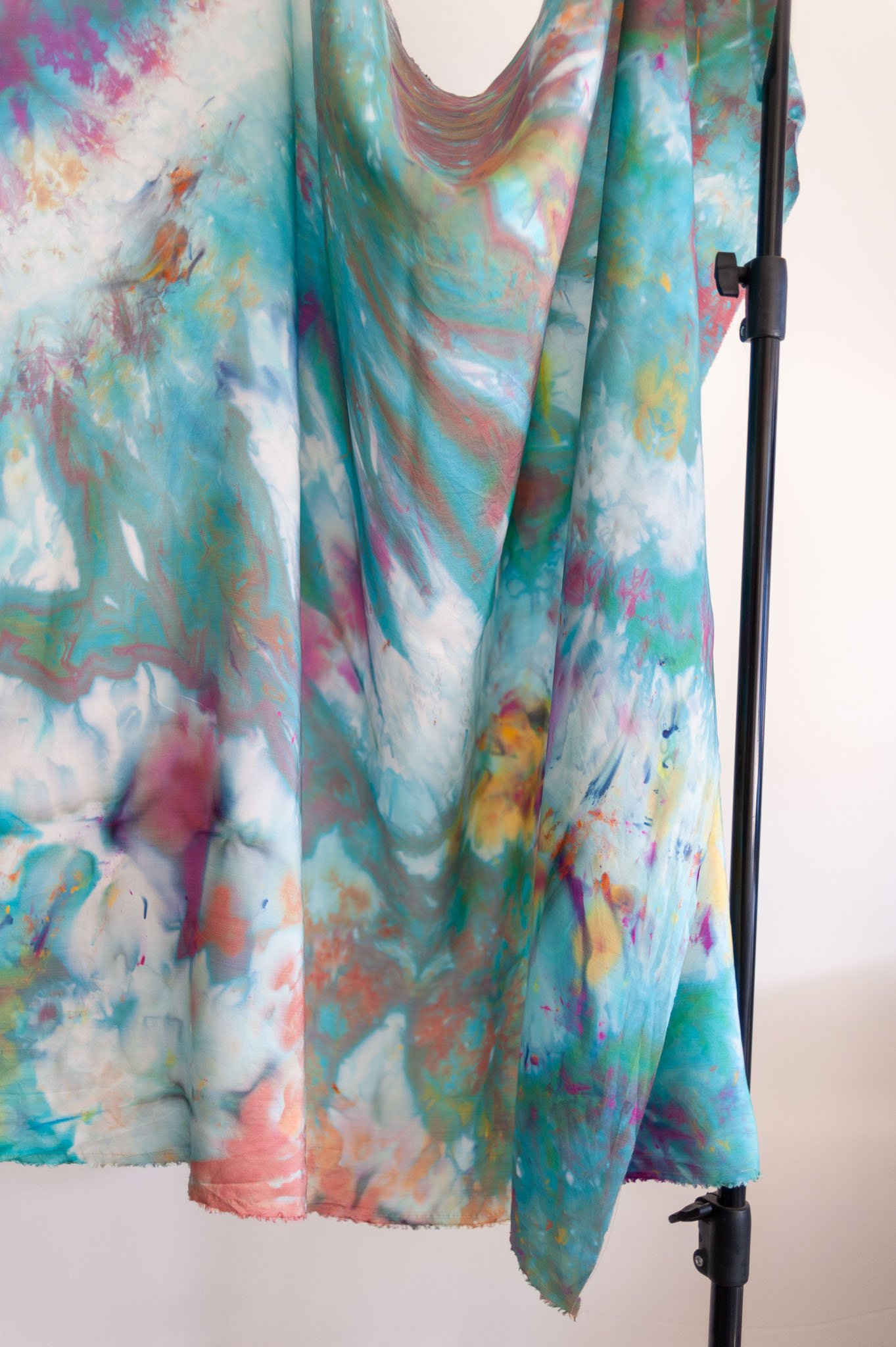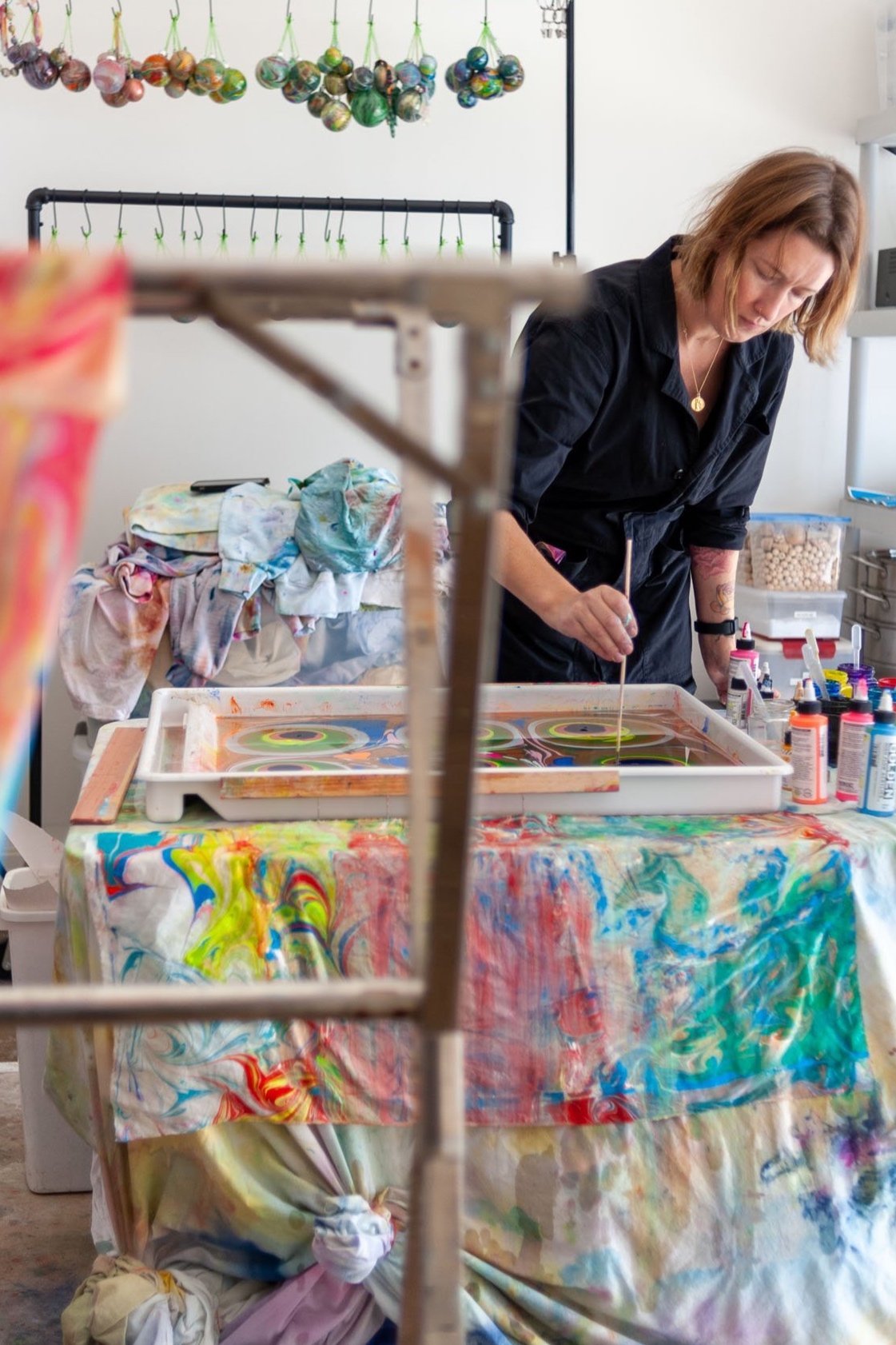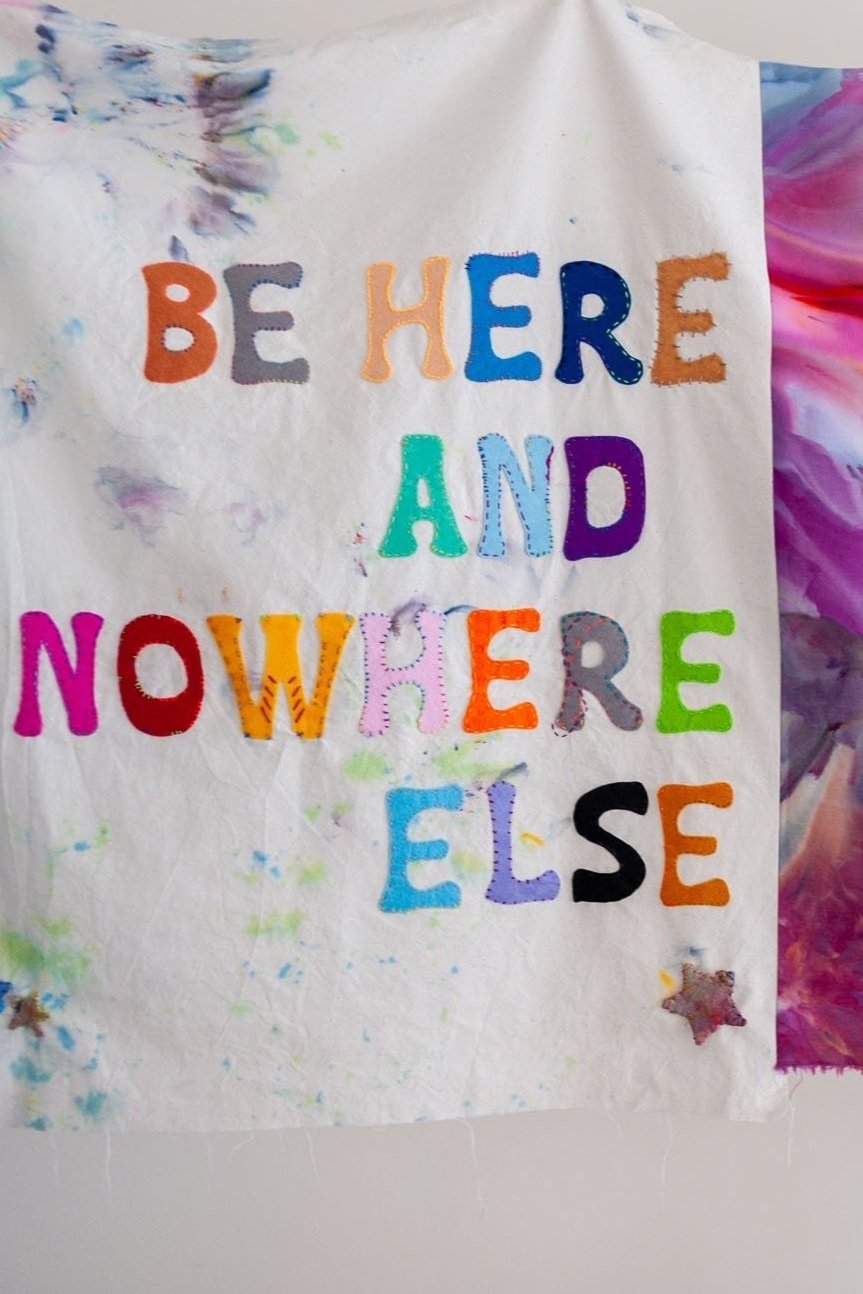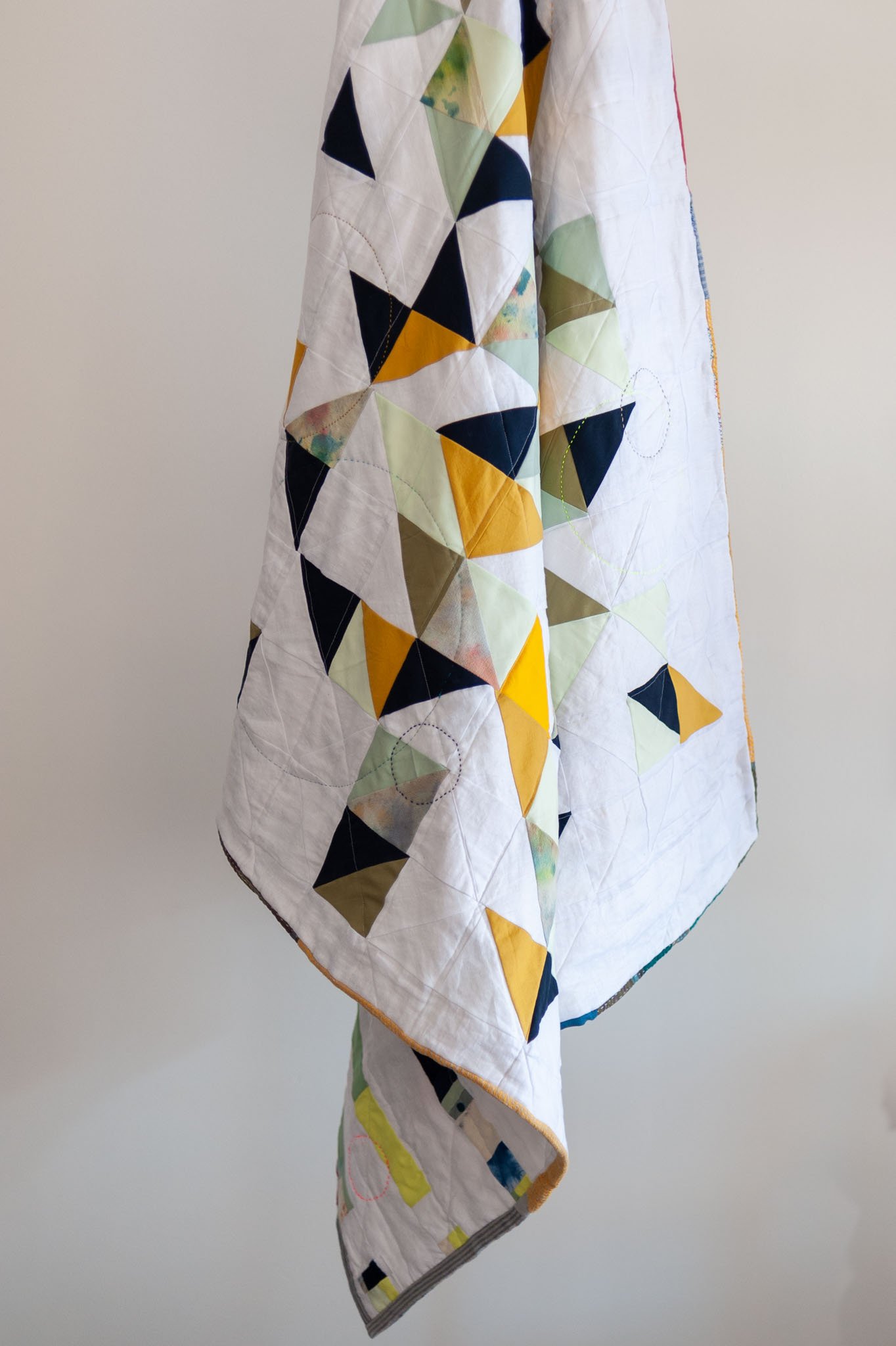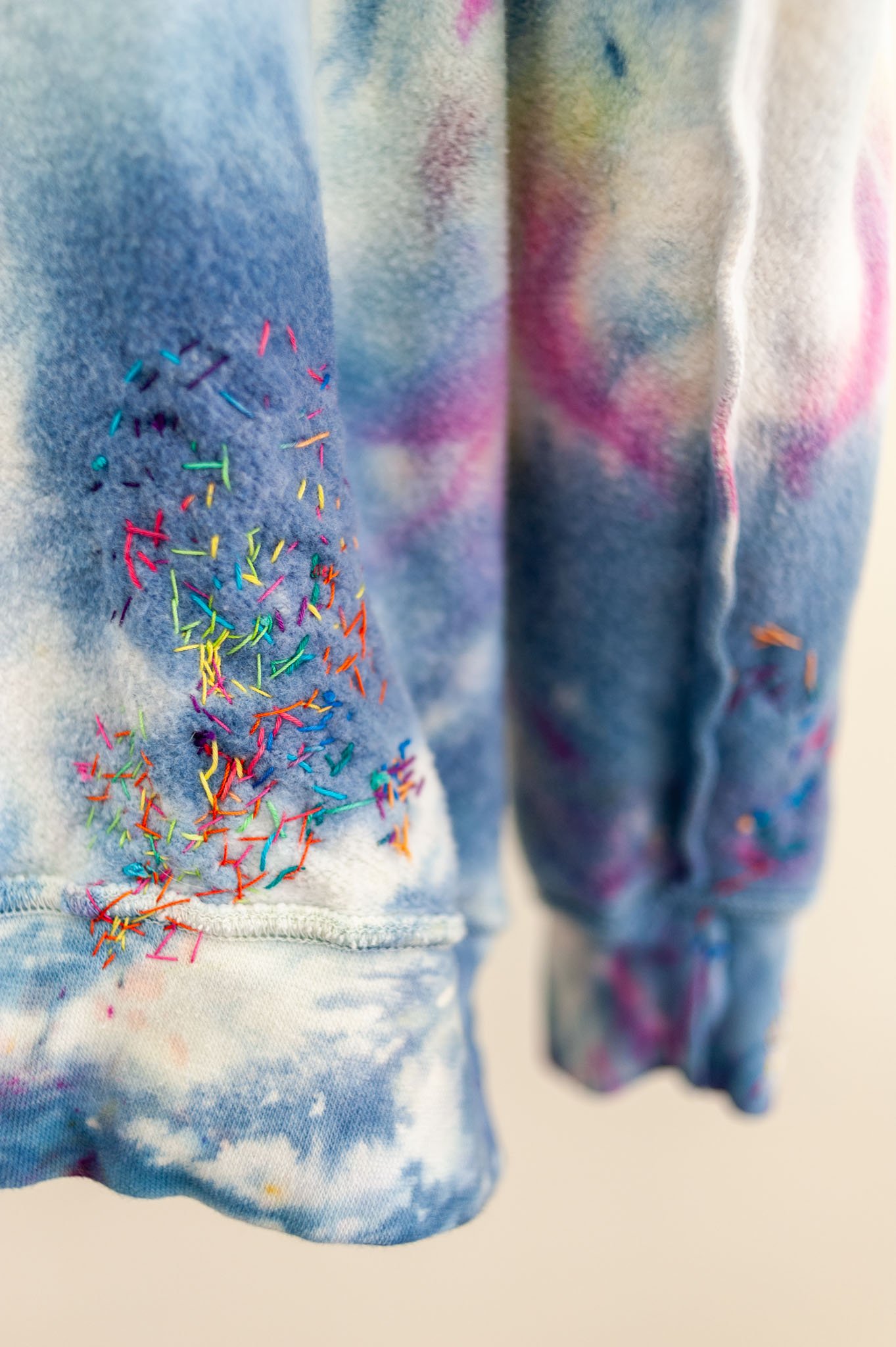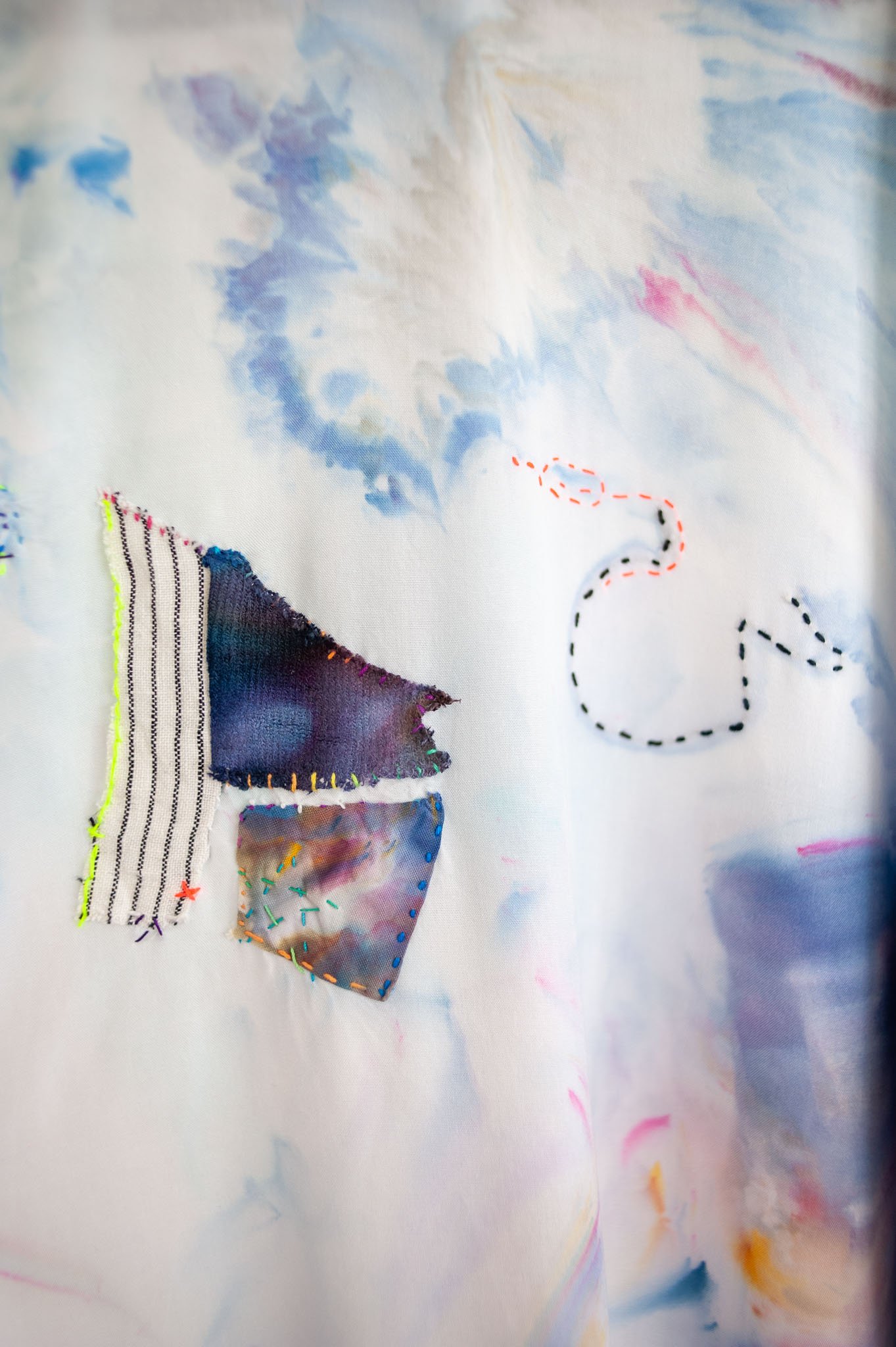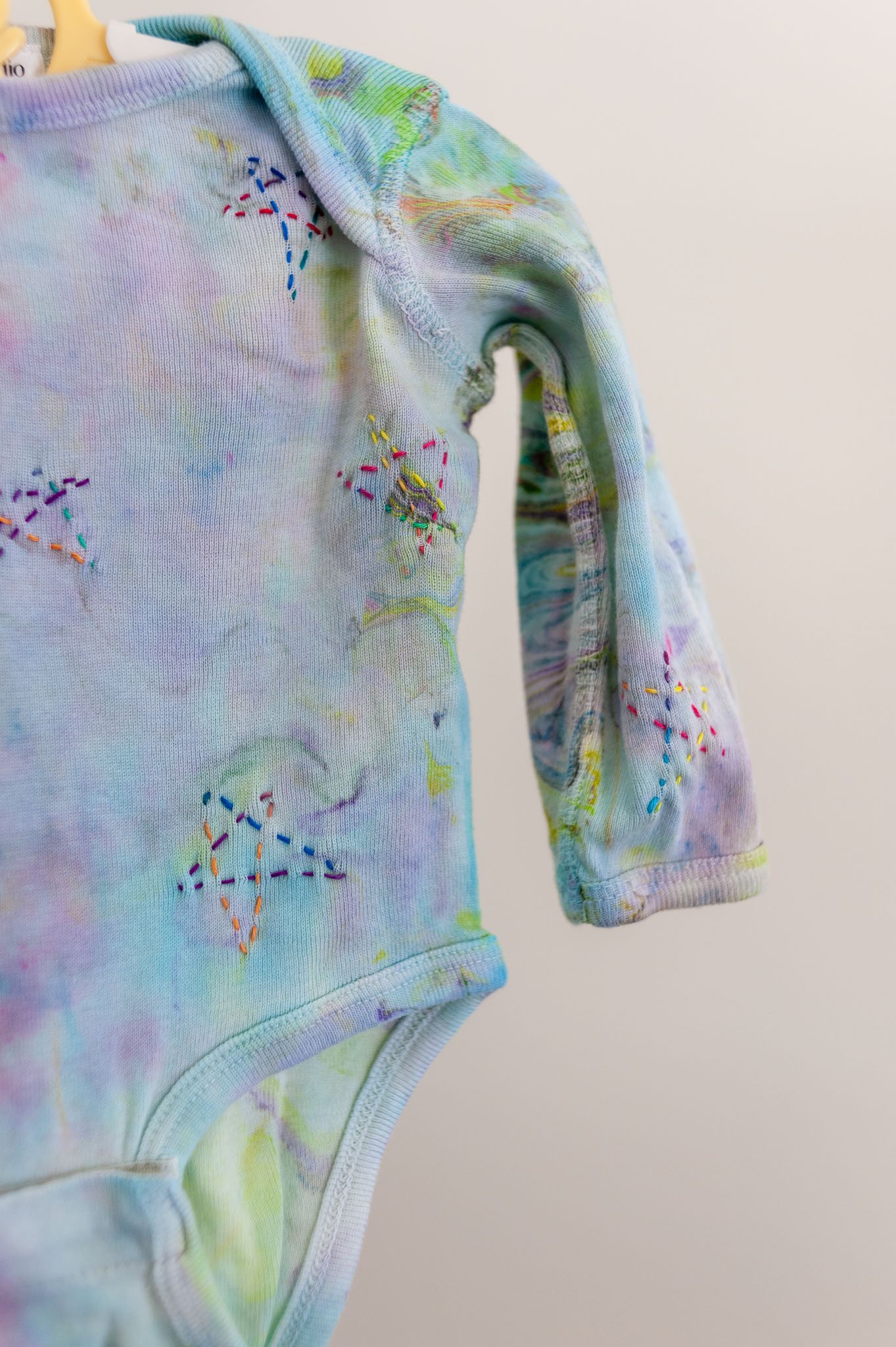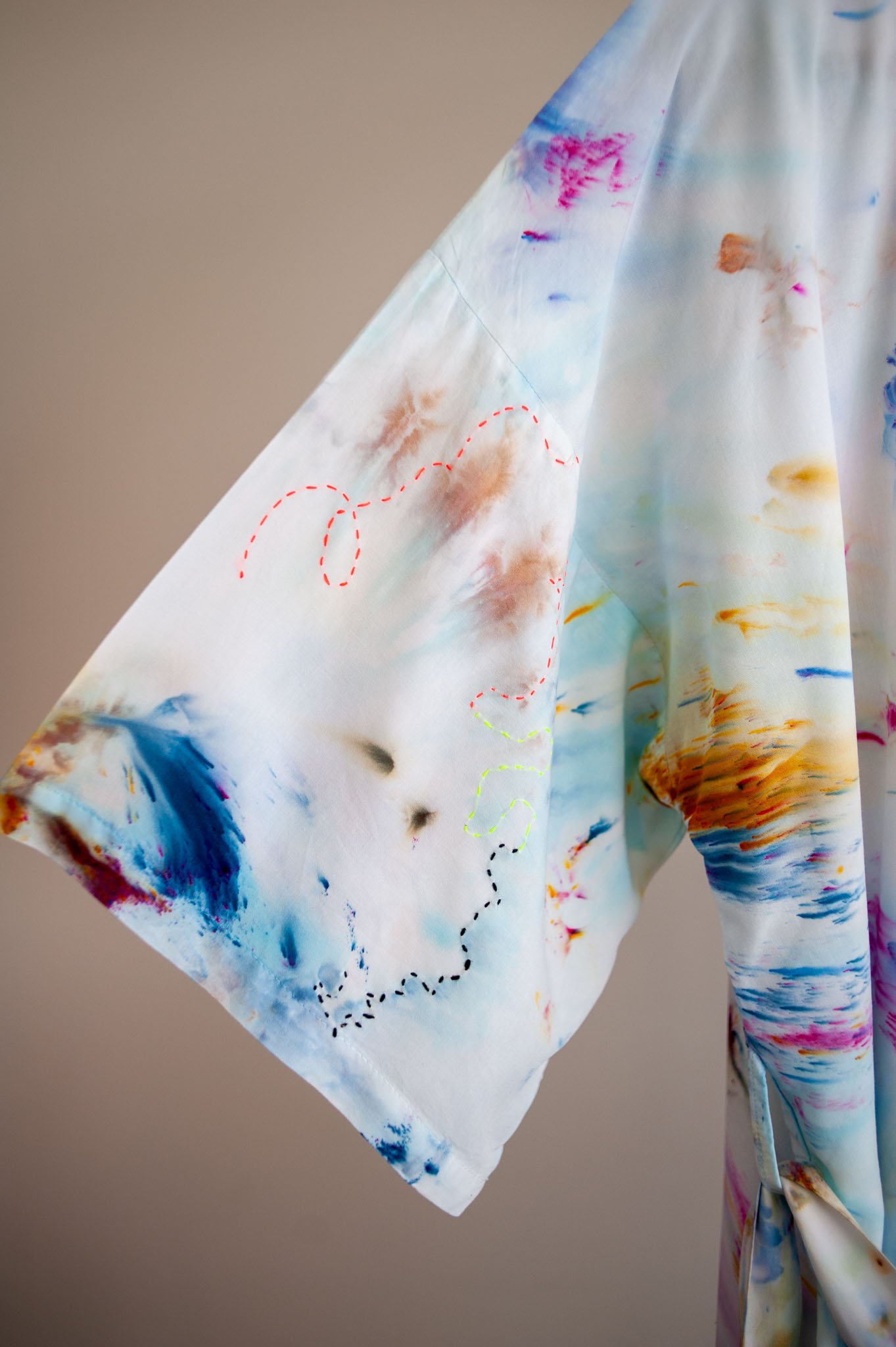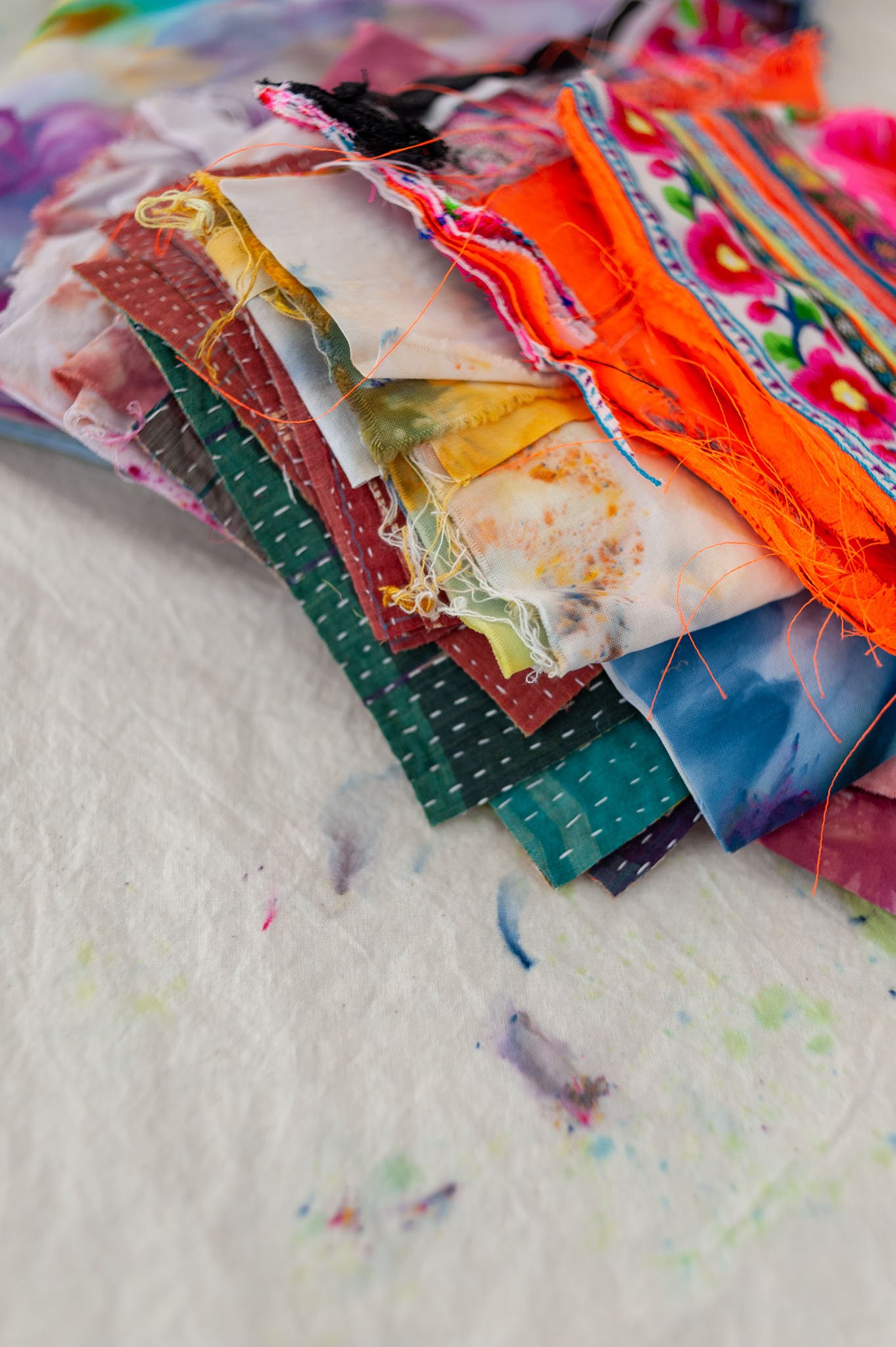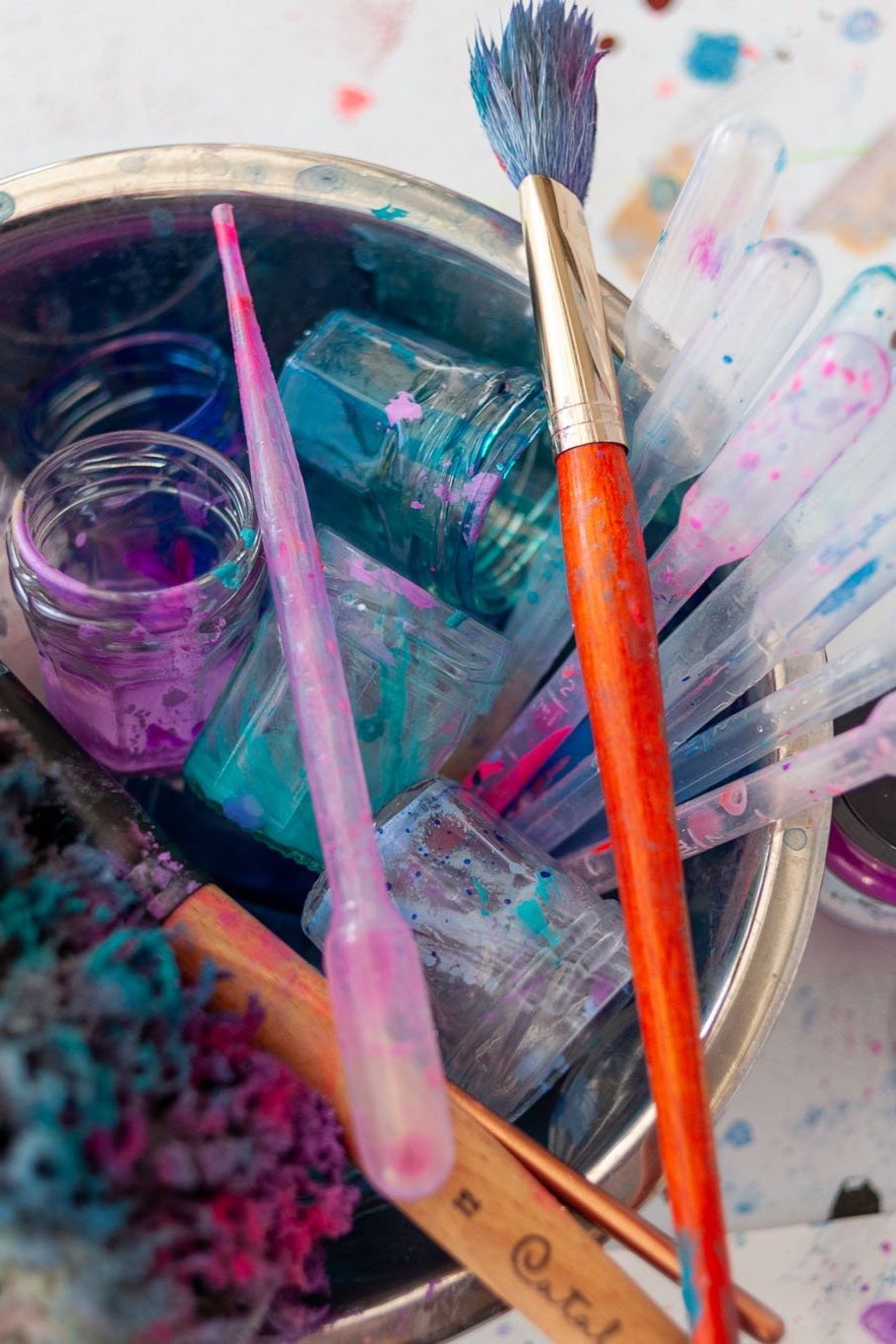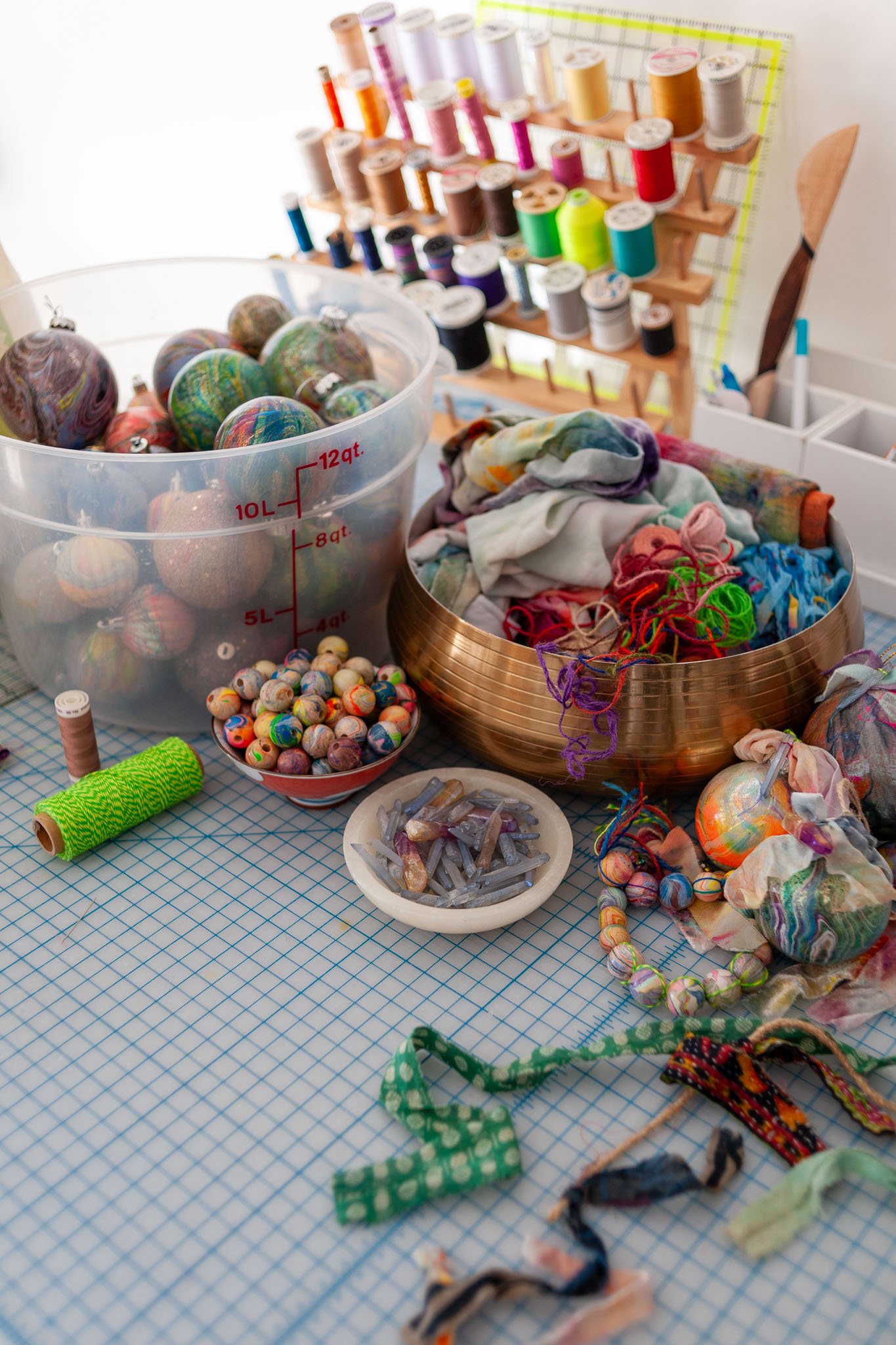What is a textile artist?
More often than not people refer to me as a tie-dyer...
But it’s not what I’d call myself (no dis to tie dyers). I use the technique on occasion, for shibori, but not so much otherwise.
I’m guessing it’s due to a general lack of vocabulary and knowledge re: textile(s)/textile art(istry)… and possibly because I don’t post videos of myself dyeing online, so how’s anyone to know?!?
What would I call myself?
A (multi-disciplinary) textile artist (focusing on: dyeing, marbling, painting, sewing and quilting).
When referring to my dyeing skills only… I’m simply a dyer. Not a tie-dyer. 👍🏻
While we’re at it, I’d like to share more on the textile industry with the help of The Googler™ and credited authors below. Race you to the bottom.
The word textile is from Latin texere which means "to weave", "to braid" or "to construct". Most textiles begin with twisting or spinning and plying fibers to create yarn (called thread when it’s very fine, and rope when it’s very heavy). The yarn is then knotted, looped, braided, or woven to make flexible fabric or cloth— and cloth can be used to make clothing and soft furnishings. All of these items— felt, yarn, fabric, and finished objects are collectively referred to as textiles.
The textile arts also include those techniques which are used to embellish or decorate textiles— dyeing and printing to add color and pattern; embroidery and other types of needlework; tablet weaving; and lace making. Construction methods such as sewing, knitting, chrochet, and tailoring, as well as the tools employed (looms and sewing needles) techniques employed (quilting and pleating) and the objects made (carpets, kilims, hooked rugs, and coverlets) all fall under the category of textile arts. - Wikipedia
What you probably didn't know when you were 12 is that what we call "tie dye" actually stems from an ancient Japanese practice called shibori, which traditionally calls for natural indigo dye and is an umbrella term for a variety of patterned dyeing techniques. All of them are variations on folding, twisting, and tying a garment before dipping it into the indigo dye. But what sets apart traditional shibori from the rubber-band-and-dump technique we know (and love) is that it tends to be very precise, ensuring a beautiful pattern that is equal parts uniform and unique. - elle.com
Dyeing is the art of imparting color to textiles using various dyes and pigments… Surface textile design is the art of creating patterns and textures on fabric surfaces.
The first step is preparing the fabric. This involves washing and treating it to ensure the dyes adhere properly. Next, the fabric is carefully stretched and secured, ready to embrace the colors that will soon grace its surface.
Artists meticulously select their color palettes, considering factors like hue, saturation, and contrast. But it doesn't stop there. Surface textile design often involves the use of dyes that react with each other, creating mesmerizing effects. These interactions can result in gradients, marbling, or even unexpected color combinations, adding an element of surprise and delight to the final piece. Artists use various techniques like hand-painting, block printing, or even immersion dyeing to create their desired patterns. Each technique requires a unique set of skills and tools, making every piece truly one-of-a-kind.
Once the dyeing process is complete, the fabric undergoes various finishing treatments. This includes washing, steaming, and sometimes even embellishing with additional elements like embroidery or beading. These finishing touches elevate the textile design, adding depth and texture. - Revolution fabrics
Ombre dyeing creates a gradient, whereas water immersion can be used to create solids. Fabric can also be hand-painted with dye. Resist-dyeing applies pigment to some areas of a textile while preventing the color from reaching other parts. There are several traditional methods of resist-dyeing. Ikat refers to a method of dyeing in which yarn is tied and resist-dyed before it is woven into a textile. Batik uses wax to prevent dye from soaking all areas of a textile. The Shibori dyeing method is from Japan. In Shibori sections of cloth are tied, clamped, and folded off before a textile is dyed, thus creating patterns. - San Jose Museum of Quilts & Textiles
Each of these garments received multiple rounds of hand dyed (painted) color, followed by hand marbling and/or stitching. Pieces like these take hours and hours to create and are extremely thoughtfully made.
✌🏻❤️🌈
All content is owned by Tifanie White | studio. Unauthorized use including reproduction, distribution, reposting, downloading and transferring is prohibited.

